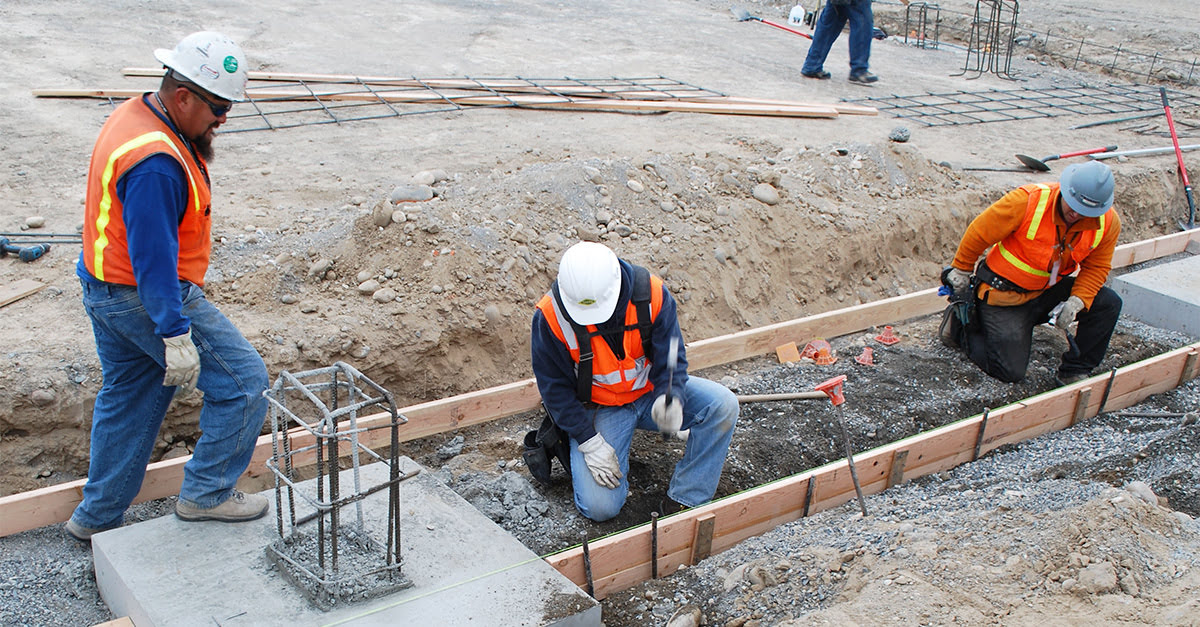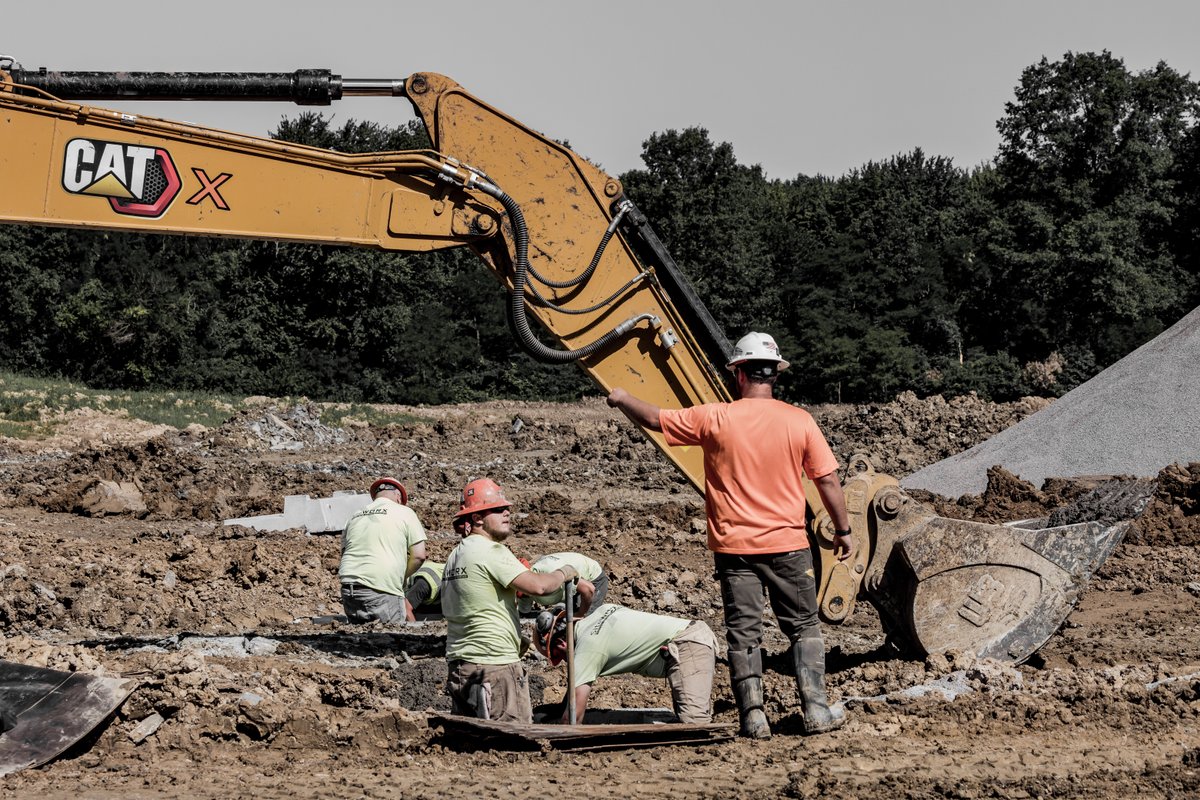Home>diy>Building & Construction>How Do Change Orders Work In Construction


Building & Construction
How Do Change Orders Work In Construction
Modified: January 2, 2024
Learn how change orders work in the context of building construction and how they can impact your project. Find out the steps involved and the importance of effective change management.
(Many of the links in this article redirect to a specific reviewed product. Your purchase of these products through affiliate links helps to generate commission for Storables.com, at no extra cost. Learn more)
Introduction
Change orders are an inevitable part of the construction process. They can arise due to various factors, such as design modifications, unforeseen site conditions, or client preferences. Understanding how change orders work is essential for construction professionals, as they can have a significant impact on project timelines and budgets.
In this article, we will delve into the intricacies of change orders in construction, exploring their definition, reasons for their occurrence, the process of initiation and approval, documentation and communication practices, their impact on project timelines and budgets, as well as the methods for resolving potential disputes.
By gaining a comprehensive understanding of change orders, construction professionals can effectively navigate these changes, ensuring successful project completion while maintaining client satisfaction.
Key Takeaways:
- Change orders in construction are inevitable and can arise from design modifications, unforeseen site conditions, client preferences, regulatory changes, value engineering, and errors or omissions in original construction documents.
- Effective management of change orders requires a well-defined process for initiation and approval, thorough documentation, clear communication, proactive assessment of impacts on project timelines and budgets, and a structured approach to dispute resolution.
Read more: What Is A Change Order In Construction
Definition of Change Orders
In the construction industry, change orders refer to documented changes that affect the scope of work, schedule, or cost of a construction project. They typically involve alterations or modifications to the original project plans, specifications, or contract agreements.
Change orders can arise for various reasons, such as architect or engineer design changes, unforeseen site conditions, client preferences for different materials or finishes, or adaptations to accommodate changes in local regulations. These changes may be requested by the client, project team members, or even mandated by external factors like building code updates.
Change orders can range from minor adjustments, such as revising a finish material or adjusting the location of a light fixture, to major modifications, like expanding the size of a room or rerouting mechanical systems. Regardless of the scale, change orders require careful consideration and documentation to ensure that all parties involved are on the same page and any resulting impacts on the project are properly addressed.
It is crucial for construction professionals to have a clearly defined and established process for managing change orders. This process typically includes procedures for initiating, reviewing, approving, and implementing change orders to ensure smooth project execution.
Reasons for Change Orders in Construction
Change orders can occur in construction projects for a variety of reasons. Understanding these reasons is essential for effectively managing and responding to change requests. Here are some common factors that can lead to change orders:
- Design Modifications: One of the most common reasons for change orders is design modifications. As the project progresses, it is not uncommon for clients or project team members to request changes to the original design. These modifications may be driven by aesthetic preferences, functional requirements, or even code compliance.
- Unforeseen Site Conditions: Construction projects often encounter unexpected site conditions that were not accounted for during the initial planning stages. These can include encountering poor soil conditions, hidden utilities, or environmental concerns. When such conditions arise, change orders are necessary to address the changes required to mitigate the impact on the project.
- Client Preferences: Clients may change their minds or have evolving preferences throughout the construction process. They may request changes to materials, finishes, fixtures, or layouts based on personal taste, budget adjustments, or evolving project needs. Accommodating these client preferences can often lead to change orders.
- Regulatory Changes: Building codes, zoning regulations, and other governmental requirements can change during the course of a construction project. It is important to stay up-to-date with these changes to ensure compliance. When regulatory updates occur, change orders may be necessary to incorporate the new requirements into the project.
- Value Engineering: Change orders can also be initiated to optimize project costs without sacrificing quality. Through a process called value engineering, alternatives are explored to achieve cost savings while maintaining or enhancing project functionality and performance.
- Errors or Omissions: Mistakes or omissions in the original construction documents can also lead to the need for change orders. When discrepancies are identified during the construction phase, change orders are necessary to rectify the errors and ensure project accuracy.
These are just a few examples of the factors that can contribute to the occurrence of change orders in construction projects. By understanding these reasons, construction professionals can proactively anticipate potential changes and effectively manage the associated process of initiating and implementing change orders.
Process of Initiation and Approval
The process of initiating and approving change orders is an essential step in managing and implementing modifications to a construction project. This process ensures that all changes are properly assessed, documented, and approved before being executed. Here is a typical process for initiating and approving change orders:
- Identification of Change: The first step in the process is to identify the need for a change order. This can be initiated by the client, project team members, or subcontractors. Any party involved who identifies a necessary change should document and communicate the proposed change to the project manager or designated personnel.
- Change Analysis: Once a change is identified, a thorough analysis is conducted to assess the impact of the proposed change on the project. This analysis includes evaluating the potential effects on the schedule, budget, quality, and overall project objectives. The project team, along with relevant stakeholders, reviews the analysis to determine the feasibility and viability of the proposed change.
- Documentation: Once the change has been analyzed and deemed viable, it is essential to document the change order request. This includes capturing the details of the proposed change, such as the specific modifications, rationale, estimated cost implications, and any associated time schedule adjustments. The documentation should be clear, concise, and include all relevant information to facilitate the approval and execution of the change order.
- Approval Process: The change order documentation is then submitted for approval. The approval process typically involves review by key stakeholders, including the client, project manager, architect, and any other relevant parties involved in the project. The decision to approve or reject the change order is based on factors such as feasibility, impact on the project’s objectives, budgetary implications, and contractual obligations.
- Negotiations: In some cases, negotiations may be required during the approval process. This can involve discussing the scope, cost, timing, and any potential adjustments to the contract resulting from the change order. The goal of negotiations is to reach a mutually satisfactory agreement between the parties involved.
- Execution: Once the change order is approved, it can be implemented into the construction project. This may involve notifying relevant subcontractors, adjusting project schedules, updating contract agreements, and revising project plans and specifications. Effective communication and coordination among project team members are crucial to ensuring that the change is successfully incorporated into the ongoing construction activities.
By following a well-defined process of initiation and approval, construction professionals can streamline the management of change orders, ensuring that all changes are properly assessed, documented, and approved before being executed. This helps to maintain project integrity, minimize disruptions, and ensure that modifications align with the project’s goals and objectives.
When processing change orders in construction, make sure to document all changes in writing, including the scope, cost, and timeline adjustments, to avoid disputes later on.
Documentation and Communication
Effective documentation and communication are essential components of managing change orders in construction projects. Clear and thorough documentation helps ensure that all parties are aware of the changes, understand the implications, and have a record of the agreed-upon modifications. Here are some key aspects of documentation and communication in relation to change orders:
- Change Order Form: A change order form is a standardized document used to capture all the necessary information related to a change request. This form typically includes details such as the scope of the change, cost implications, schedule adjustments, and any impacts on the project timeline or budget. Using a standardized form ensures consistency in documenting change orders and facilitates efficient record-keeping.
- Detailed Descriptions and Specifications: When documenting change orders, it is essential to provide clear and specific descriptions and specifications for the proposed modifications. This includes detailing the exact changes to be made, any associated drawings or plans, and any specific materials, finishes, or equipment that are affected by the change. Providing detailed information helps prevent misunderstandings and ensures that the change is accurately implemented.
- Cost Estimates and Pricing: Change orders often involve cost implications, whether it be additional expenses or potential savings. It is crucial to clearly outline the estimated costs associated with the change order, including labor, materials, and any other relevant expenses. Providing transparent and accurate cost estimates helps the client and stakeholders make informed decisions and understand the financial impact of the change.
- Approval Signatures: Once a change order is approved, it is important to obtain signatures from all relevant parties involved. These signatures serve as confirmation and agreement on the proposed change and its associated impacts. Having documented approval signatures provides a record of consent and helps mitigate potential disputes or misunderstandings later in the project.
- Effective Communication: Throughout the process of managing change orders, effective communication is crucial. This includes open and transparent communication between the client, project team members, subcontractors, and other stakeholders. Regular communication helps ensure that everyone is aware of the changes, understands their roles and responsibilities, and can provide input or address any concerns related to the change order.
- Regular Project Updates: As change orders are implemented, it is important to provide regular updates to all parties involved in the project. This includes keeping the client informed of any changes to the project scope, schedule, or budget. Regular updates help maintain trust and transparency and facilitate informed decision-making throughout the construction process.
By emphasizing thorough documentation and effective communication, construction professionals can ensure that change orders are properly documented, understood, and implemented. This promotes clarity, minimizes misunderstandings, and enables efficient project management in the face of changes.
Read more: What Is A Work Order In Construction
Impact on Project Timeline and Budget
Change orders can have a significant impact on both the project timeline and budget. As modifications are introduced, it is essential to consider the potential effects on the overall project schedule and financial resources. Here are some ways in which change orders can impact project timeline and budget:
- Time Extensions: Change orders often require additional time to implement. Whether it’s revising plans, ordering new materials, or adjusting construction activities, incorporating changes into the project can extend the overall timeline. It is important to assess the time impact of each change order and make adjustments to the project schedule accordingly.
- Delays and Disruptions: Change orders can lead to disruptions in the construction process. These disruptions can occur due to the need to halt or rearrange ongoing work, reassign resources, or coordinate with subcontractors or suppliers. Each change order should be carefully evaluated for potential impacts on the project’s progress and the ability to meet project milestones.
- Cost Increases: One of the most apparent impacts of change orders is the potential for increased costs. The addition of new materials, labor, equipment, or design changes can result in additional expenses that were not initially accounted for in the original project budget. It is crucial to thoroughly assess the cost implications of each change order and ensure that the necessary adjustments are made to the project budget.
- Savings Opportunities: While change orders often lead to increased costs, there are instances where modifications can result in cost savings. Through value engineering and alternative solutions, it is possible to identify efficiencies and cost-effective alternatives within the scope of the change order. By exploring these opportunities, construction professionals can mitigate the financial impact of change orders.
- Contractual Considerations: Change orders can also have contractual implications. Whether it’s revising the scope of work, adjusting payment terms, or addressing potential penalties or incentives tied to project milestones, it is important to carefully review contract agreements and ensure that any changes align with the contractual obligations of all parties involved.
Managing the impact of change orders on the project timeline and budget requires proactive planning, effective communication, and meticulous documentation. Regularly evaluating the overall impact of change orders helps construction professionals make informed decisions, maintain project integrity, and manage expectations regarding project completion and financial resources.
Dispute Resolution
Despite best efforts to manage change orders smoothly, disputes can sometimes arise during the process. Disagreements may occur due to differing interpretations of the change order, disagreements over costs or schedule impacts, or other conflicts that may arise during the construction project. Implementing an effective dispute resolution process is crucial for maintaining project progress and fostering positive working relationships. Here are some common methods of resolving disputes related to change orders:
- Negotiation: The first step in resolving disputes is often through negotiation. This involves discussions among the parties involved to find a mutually acceptable resolution. Negotiation provides an opportunity to explore different perspectives, understand each party’s concerns, and identify potential compromises.
- Mediation: If negotiation fails to resolve the dispute, mediation can be a useful alternative. In mediation, a neutral third party, known as a mediator, facilitates discussions between the conflicting parties. The mediator helps guide the conversation and assists in finding a mutually agreeable solution. Mediation is a voluntary and non-binding process, allowing the involved parties to maintain control over the outcome.
- Arbitration: When negotiations and mediation fail to resolve a dispute, arbitration may be the next step. In arbitration, a neutral third party, known as an arbitrator, hears the arguments from both sides and makes a binding decision. Arbitration can be less formal and less costly compared to litigation, and its process and outcome are typically confidential.
- Litigation: Litigation is the formal process of resolving disputes through the court system. It involves presenting the case before a judge or jury, who will make a binding decision. Litigation can be a lengthy and costly process and is generally considered a last resort for resolving construction disputes.
Choosing the appropriate method of dispute resolution depends on the nature and complexity of the conflict, the willingness of the parties involved to cooperate, and the desired outcome. Construction professionals should carefully consider the benefits and drawbacks of each method and evaluate which approach is most suitable for their specific situation.
It is worth noting that effective communication, clear documentation, and proactive management of change orders can significantly reduce the likelihood of disputes and improve the overall success of the project. Maintaining open lines of communication, addressing concerns promptly, and documenting change orders thoroughly can help mitigate conflicts and contribute to a more collaborative and harmonious construction process.
Conclusion
Change orders are an inevitable part of the construction process, and understanding how to manage them effectively is crucial for successful project completion. By defining change orders, exploring their reasons for occurrence, discussing the process of initiation and approval, highlighting the importance of documentation and communication, and considering their impact on the project timeline and budget, construction professionals can navigate the complexities associated with change orders.
Thorough documentation and clear communication play a vital role in managing change orders. Properly documenting change requests, including detailed descriptions and specifications, cost estimates, and approval signatures, helps ensure that all parties involved are aware of the changes and understand their implications. Effective communication throughout the process fosters collaboration, minimizes misunderstandings, and facilitates informed decision-making.
Change orders can have a significant impact on project timelines and budgets. It is essential to assess the time extensions, delays, and disruptions that may result from change orders. Additionally, careful consideration should be given to the cost increases and potential savings opportunities associated with modifications. By staying proactive, construction professionals can make necessary adjustments to project schedules and budgets to account for change orders.
In the event of disputes, having a well-defined dispute resolution process can help reach amicable resolutions. Options such as negotiation, mediation, arbitration, and litigation provide different approaches for resolving conflicts related to change orders. Selecting the appropriate method depends on the nature and complexity of the dispute and the desired outcome.
In conclusion, change orders present both challenges and opportunities in the construction industry. By understanding the process, effectively documenting changes, and maintaining open and transparent communication, construction professionals can navigate change orders more efficiently. By doing so, they can ensure that projects remain on track, budgets are managed effectively, and client satisfaction is maintained. Successful management of change orders contributes to the overall success of construction projects and helps build strong relationships with clients and stakeholders.
Frequently Asked Questions about How Do Change Orders Work In Construction
Was this page helpful?
At Storables.com, we guarantee accurate and reliable information. Our content, validated by Expert Board Contributors, is crafted following stringent Editorial Policies. We're committed to providing you with well-researched, expert-backed insights for all your informational needs.















0 thoughts on “How Do Change Orders Work In Construction”